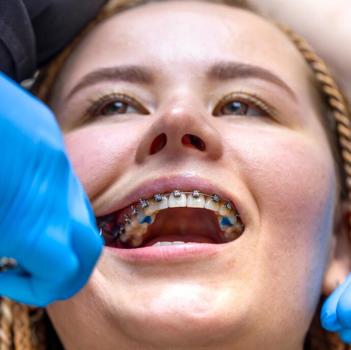Treatment Overview
Subciliary lower blepharoplasty is a surgical eyelid procedure performed through an incision just below the lower lash line (subciliary incision). This technique allows surgeons to remove or reposition excess fat, tighten loose skin, and smooth the under-eye area for a more youthful, refreshed look. Unlike transconjunctival blepharoplasty, which leaves no external scar, the subciliary approach provides direct access to both skin and muscle, making it highly effective for patients with under-eye bags and skin laxity.
In Korea, this surgery is widely performed using advanced scar-minimizing techniques, ensuring natural results and minimal visibility of incisions. Korean surgeons are globally recognized for their precision, artistry, and ability to achieve balanced, youthful outcomes tailored to different facial structures.
Purpose & Benefits
- Eliminates or reduces under-eye bags and puffiness
- Smooths wrinkles and fine lines beneath the eyes
- Tightens loose or sagging lower eyelid skin
- Improves eyelid contour for a youthful, alert appearance
- Can be combined with fat repositioning or grafting for enhanced results
- Long-lasting surgical solution compared to fillers
Ideal Candidates
- Individuals with significant under-eye bags or puffiness
- Patients with loose skin, wrinkles, or muscle laxity in the lower eyelid area
- Those who want a permanent alternative to fillers or lasers
- Healthy adults with realistic expectations about results
- Patients concerned about both excess fat and skin under the eyes
Possible Risks & Complications
- Temporary swelling, bruising, or redness
- Mild discomfort during recovery
- Visible scarring (though typically minimal and hidden along lash line)
- Asymmetry in eyelid shape (rare)
- Dry eyes or irritation
- Ectropion (lower lid drooping, uncommon with skilled surgeons)
Surgical Techniques Used
Korean surgeons utilize refined subciliary incision methods:
- Skin–Muscle Flap Technique: Allows removal of excess skin and fat through a single incision.
- Fat Repositioning: Instead of removing all fat, orbital fat is redistributed to fill hollows and prevent a sunken look.
- Skin Tightening: Excess skin is trimmed precisely for a smooth contour.
- Combination Approach: Often combined with canthopexy/canthoplasty to support the eyelid and prevent drooping.
Recovery & Aftercare
- Initial swelling and bruising peak within 3–5 days, subsiding over 1–2 weeks.
- Stitches are usually removed after 5–7 days.
- Cold compresses and head elevation help reduce swelling.
- Avoid strenuous activity, makeup, and contact lenses until cleared by the surgeon.
- Sun protection is essential to prevent pigmentation along the incision line.
- Final results typically appear within 1–3 months.
Results & Longevity
- Natural-looking rejuvenation of the under-eye area
- Long-lasting improvement in puffiness and wrinkles
- Smoother, tighter skin under the eyes
- Results typically last 10 years or more, depending on aging and lifestyle
- May be combined with other procedures (fat grafting, laser resurfacing) for enhanced results
Treatment Process in Korea
Korea is a top destination for lower blepharoplasty due to its:
- Advanced Surgical Expertise: Korean surgeons are highly experienced in delicate eyelid procedures, especially the subciliary approach for Asian and Western eyelid structures.
- Cutting-Edge Techniques: Many clinics use micro-incisions and hidden scar methods to ensure the incision line is almost invisible.
- Combination Treatments: Korean blepharoplasty often integrates fat repositioning, skin tightening, and canthopexy for comprehensive rejuvenation.
- Customized Approach: Surgeons assess skin thickness, fat distribution, and eye shape to create a tailored surgical plan.
- Medical Tourism Infrastructure: International patients benefit from English-speaking staff, detailed consultations, and aftercare support.
Cost Range in Korea
The cost varies based on the surgeon’s expertise, clinic reputation, and whether additional procedures (fat repositioning, canthopexy) are included.
- Basic Subciliary Lower Blepharoplasty: ₩2,500,000 – ₩4,500,000 KRW ($1,900 – $3,500 USD)
- With Fat Repositioning: ₩3,500,000 – ₩6,000,000 KRW ($2,700 – $4,600 USD)
- Premium Clinics / Top Surgeons: ₩5,000,000 – ₩8,000,000 KRW ($3,800 – $6,200 USD)
- Combination Packages (Blepharoplasty + Laser Resurfacing or Canthopexy): ₩6,000,000 – ₩10,000,000 KRW ($4,600 – $7,700 USD)
Compared to the U.S. or Europe, Korea offers world-class surgical results at a more affordable price, making it a leading destination for eyelid surgery.
Popular Clinics in Korea
- Banobagi Plastic Surgery Clinic (Seoul): Renowned for natural eyelid surgeries and scar-minimizing techniques.
- ID Hospital (Gangnam): One of the largest cosmetic surgery hospitals, offering advanced blepharoplasty options.
- View Plastic Surgery Clinic: Known for combination eyelid surgeries with fat repositioning.
- JK Plastic Surgery: A top choice among international patients, with premium care and multilingual support.
- Oracle Clinic: Offers eyelid surgeries along with skin rejuvenation treatments.
Summary
Subciliary lower blepharoplasty in Korea is a trusted solution for patients with under-eye bags, wrinkles, and skin laxity. By combining advanced surgical precision with Korea’s innovative techniques, patients can achieve natural, scar-minimized, and long-lasting results. With its competitive costs, skilled surgeons, and strong medical tourism infrastructure, Korea continues to be one of the most sought-after destinations for lower eyelid rejuvenation surgery.




